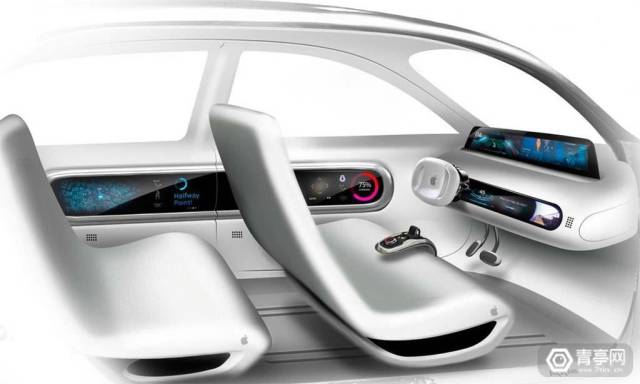Apple’s latest VR patent: This is what an in-car entertainment system will look like in the era of autonomous driving
In recent weeks, the U.S. Patent and Trademark Office has published a series of VR patents filed by Apple. We’ve seen a lot of novel and conceptual things, and we even learned through recent patents that Apple also plans to apply VR to self-driving cars.
According to foreign media Patently Apple, Apple plans to combine VR with self-driving cars. This is undoubtedly a fashionable-sounding in-car entertainment system that may have a major impact on the development of cars in the future.

Interestingly, according to Apple’s patent, Apple believes that car windows in the future era of autonomous driving are completely unnecessary. First, car glass is relatively fragile, which reduces the overall structural safety factor of the car. Second, it will also increase the number of vehicles. Cost (how to understand this...thinking). For example, a car may look very spacious with the seats placed inward. In the future, cars may no longer be just transportation tools.

First, Apple demonstrated a set of virtual and augmented reality systems. Figure 1 shows passengers in the vehicle wearing VR headsets for viewing, while Figure 2 shows images projected onto the car windows through augmented reality.
It can be seen that the virtual reality entertainment system prepared by Apple is not only implemented through a VR headset, but also has an augmented reality output, which can project content to the car window to achieve a mixed reality viewing effect.

The VR headset shown in Figure 8, car seats, and a series of in-car sensors form a system that can not only feel changes in vehicle speed, but also integrate this real sense of motion into the virtual visual experience.
In addition, this linkage also helps reduce motion sickness. This experience is fundamentally different from traditional fixed VR headsets. For example, acceleration and motion in the virtual experience can be matched to the acceleration and motion of the vehicle.
Even the ventilation system, audio system, seat suspension, and vehicle braking in the car can be combined with the VR system to provide a more immersive effect. This is also what many VR egg chairs currently have, and cars have the natural advantage of combining the two. or combined.

Figure 9 shows the virtual conference system in the car. At the same time, it also shows a scene of riding a boat through a rapid river. It is perfect to combine this high-speed car with it.
In terms of details, Apple provides a passenger detection and customization system that allows passengers to choose relaxing, exciting or other different types of VR experiences. At the same time, various sensors are used to detect whether passengers are motion sick or otherwise uncomfortable. These devices include wristbands, armbands, etc. The data types include heart rate, sweating, swallowing and other physiological reactions.

In addition, the patent exposed this time also shows that Apple is used to create a virtual ground design, and even set up some virtual arms or feet to help passengers maintain a sense of position and direction in the virtual environment. This is mainly to prevent passengers’ feet from still being in the virtual environment, which may cause dizziness, etc. It can also prevent passengers from feeling like flying in the air, which would otherwise make passengers feel uncomfortable.
Of course, there are some obstacles to implementing this ideal system. The biggest obstacle is that passengers cannot see the outside world when wearing a VR headset, especially when the vehicle changes state significantly when turning, climbing, etc., it may even cause discomfort. However, this situation can also be alerted to passengers through realistic arrows or sound systems in the VR headset.

It is reported that Apple submitted this patent in the third quarter of 2017. Although these patents may never be used in actual products, they at least show that Apple is actively participating in the application of VR in future life. At the AR level, Apple has launched ARKit version 1.5 and achieved staged success on iPhone and iPad. Results. According to the latest news, Apple’s AR application has been downloaded more than 13 million times worldwide.
As early as 2015, Apple was revealed to be developing a car project code-named Project Titan, and Apple executives later confirmed the news. Although the current main research and development work has shifted from vehicle research and development to the field of autonomous driving, it at least proves that Apple is also conducting more research on automobiles.

In fact, there are many cases of combining VR and cars. At the end of last year, Renault demonstrated a case of combining VR and self-driving cars. In early March, we also saw a case of Uber combining VR and self-driving cars, and plans to In this way, travelers can enjoy their journey more.
In the era of autonomous driving, we no longer need to control the steering wheel, accelerator, and brakes. The driver's hands can be truly freed, and the driver will have more time to do other things. There is no doubt that entertainment systems will become another research focus of automobile companies and technology companies. Although the current L5 level cars have not yet been brought, it will definitely bring more competition.

